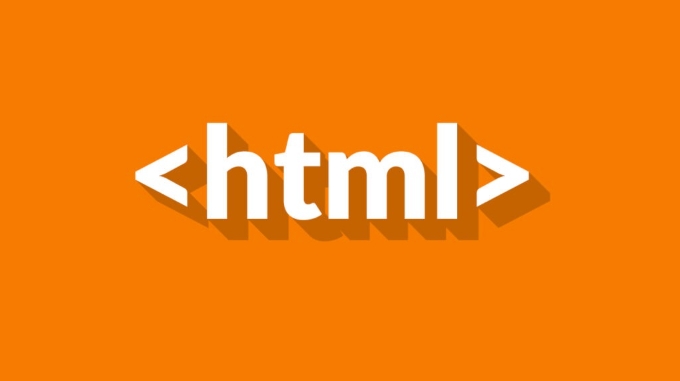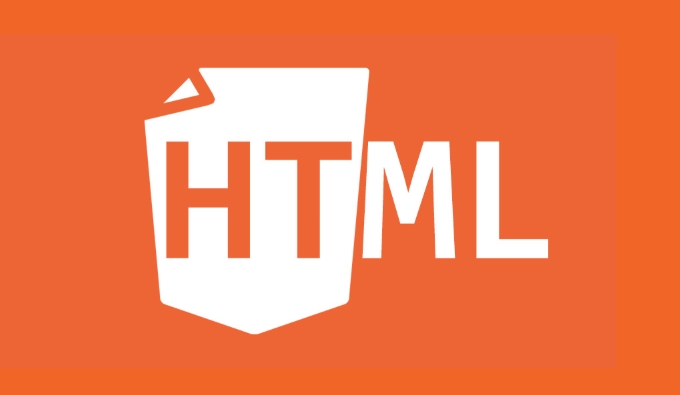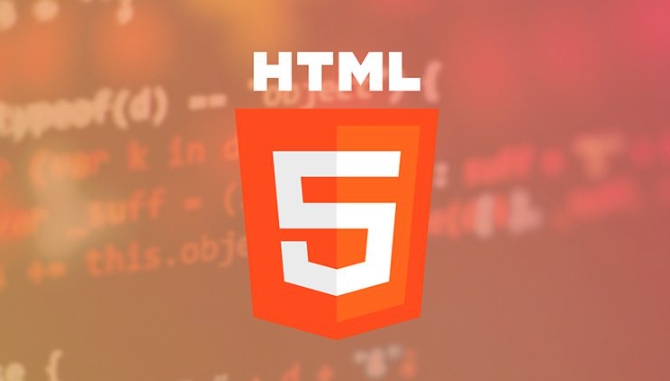 Web Front-end
Web Front-end
 HTML Tutorial
HTML Tutorial
 Implementing Responsive Images with the HTML srcset and sizes Attributes
Implementing Responsive Images with the HTML srcset and sizes Attributes
Implementing Responsive Images with the HTML srcset and sizes Attributes
Jul 12, 2025 am 12:15 AMsrcset and sizes are key properties for HTML implementation of responsive images. srcset provides multiple image sources and their width or pixel density, such as 400w and 800w, and the browser selects the appropriate image accordingly; sizes defines the display width of the image under different screen widths, such as (max-width: 600px) 100vw, 50vw, so that the browser can more accurately match the image size. In actual use, you need to prepare multi-size pictures, clearly named, design layout in accordance with media query, and test the performance of the equipment to avoid ignoring sizes or unit errors, thereby saving bandwidth and improving performance.

When web pages are loading, images often occupy the maximum bandwidth. In order to enable different devices to efficiently load images of the right size, HTML provides srcset and sizes properties to implement responsive images.

What is srcset ?
srcset allows you to provide multiple image sources for your browser and tell it the width or pixel density of those images. In this way, the browser can select the most suitable picture to load according to the screen size and resolution of the current device.

For example:
<img src="/static/imghw/default1.png" data-src="image-400w.jpg" class="lazy"
srcset="image-400w.jpg 400w, image-800w.jpg 800w, image-1200w.jpg 1200w"
alt="Example Picture"> In the above code, the browser will select a suitable image file from the srcset list based on the available space and device pixel ratio.

Key points:
- Each image is followed by its width (ends with
w), such as400w - The browser makes judgments based on the viewport size, scaling ratio and other factors
What is the function of sizes ?
Although srcset provides multiple images, the browser does not know how big the image will appear on the page. At this time, sizes are needed to tell the browser: "How wide should this image be displayed under different screen widths."
For example:
<img src="/static/imghw/default1.png" data-src="image-400w.jpg" class="lazy"
srcset="image-400w.jpg 400w, image-800w.jpg 800w, image-1200w.jpg 1200w"
sizes="(max-width: 600px) 100vw, 50vw"
alt="Example Picture"> The meaning of this line sizes is:
- If the screen width is less than or equal to 600px, the image will fill the entire viewport width (100vw)
- Otherwise, the image takes up half of the viewport width (50vw)
Benefits of using in combination with srcset :
- The browser can more accurately select the "just right" image size
- Avoid loading of images that are too large or too small, saving bandwidth and improving performance
Suggestions in actual use
To better utilize these two properties, you can follow the following practical suggestions:
- Prepare pictures of multiple sizes : It is recommended to generate 3 to 4 versions of common widths (such as 400px, 800px, 1200px)
- Clear naming : For example, use
-400w.jpgand-800w.jpgto mark the image width - Design layout in conjunction with media query : Ensure that the breakpoints in
sizesare consistent with CSS media query - Test the performance of different devices : Chrome DevTools can be used to simulate different devices to see which picture is loaded
If you use CMS or static website generators, many support automatically generating srcset and pictures of different sizes, which can save you the hassle of manual processing.
Don't ignore small details
Some developers only write srcset but ignore sizes , so that the browser can only roughly judge the image size based on the viewport width, which may lead to the wrong image selection. Especially when the picture is not full screen width, adding sizes can truly give full play to the responsive advantage.
Another easy place to make mistakes is that the unit writes incorrectly, such as writing w as px or missing w , which will cause the browser to fail to parse correctly.
Basically that's it. The rational use of srcset and sizes can not only improve the loading speed, but also improve the browsing experience of mobile users.
The above is the detailed content of Implementing Responsive Images with the HTML srcset and sizes Attributes. For more information, please follow other related articles on the PHP Chinese website!

Hot AI Tools

Undress AI Tool
Undress images for free

Undresser.AI Undress
AI-powered app for creating realistic nude photos

AI Clothes Remover
Online AI tool for removing clothes from photos.

Clothoff.io
AI clothes remover

Video Face Swap
Swap faces in any video effortlessly with our completely free AI face swap tool!

Hot Article

Hot Tools

Notepad++7.3.1
Easy-to-use and free code editor

SublimeText3 Chinese version
Chinese version, very easy to use

Zend Studio 13.0.1
Powerful PHP integrated development environment

Dreamweaver CS6
Visual web development tools

SublimeText3 Mac version
God-level code editing software (SublimeText3)

Hot Topics
 How to create responsive images using CSS?
Jul 15, 2025 am 01:10 AM
How to create responsive images using CSS?
Jul 15, 2025 am 01:10 AM
To create responsive images using CSS, it can be mainly achieved through the following methods: 1. Use max-width:100% and height:auto to allow the image to adapt to the container width while maintaining the proportion; 2. Use HTML's srcset and sizes attributes to intelligently load the image sources adapted to different screens; 3. Use object-fit and object-position to control image cropping and focus display. Together, these methods ensure that the images are presented clearly and beautifully on different devices.
 What are the most commonly used global attributes in html?
Jul 10, 2025 am 10:58 AM
What are the most commonly used global attributes in html?
Jul 10, 2025 am 10:58 AM
class, id, style, data-, and title are the most commonly used global attributes in HTML. class is used to specify one or more class names to facilitate style setting and JavaScript operations; id provides unique identifiers for elements, suitable for anchor jumps and JavaScript control; style allows for inline styles to be added, suitable for temporary debugging but not recommended for large-scale use; data-properties are used to store custom data, which is convenient for front-end and back-end interaction; title is used to add mouseover prompts, but its style and behavior are limited by the browser. Reasonable selection of these attributes can improve development efficiency and user experience.
 Implementing Native Lazy Loading for Images in HTML
Jul 12, 2025 am 12:48 AM
Implementing Native Lazy Loading for Images in HTML
Jul 12, 2025 am 12:48 AM
Native lazy loading is a built-in browser function that enables lazy loading of pictures by adding loading="lazy" attribute to the tag. 1. It does not require JavaScript or third-party libraries, and is used directly in HTML; 2. It is suitable for pictures that are not displayed on the first screen below the page, picture gallery scrolling add-ons and large picture resources; 3. It is not suitable for pictures with first screen or display:none; 4. When using it, a suitable placeholder should be set to avoid layout jitter; 5. It should optimize responsive image loading in combination with srcset and sizes attributes; 6. Compatibility issues need to be considered. Some old browsers do not support it. They can be used through feature detection and combined with JavaScript solutions.
 Creating Hyperlinks for Navigation with the HTML a Tag
Jul 11, 2025 am 03:03 AM
Creating Hyperlinks for Navigation with the HTML a Tag
Jul 11, 2025 am 03:03 AM
Using HTML tags, you can use the href attribute to realize page jump, open new windows, positioning within pages and email and phone link functions. 1. Basic usage: Specify the target address through href, such as accessing a web page; 2. Open a new window: add target="_blank" and rel="noopener" attributes; 3. Jump within the page: combine id and # symbol to achieve anchor point positioning; 4. Email phone link: use mailto: or tel: protocol to trigger system applications.
 What are the differences and use cases for html textarea and input type text?
Jul 12, 2025 am 02:48 AM
What are the differences and use cases for html textarea and input type text?
Jul 12, 2025 am 02:48 AM
The main difference is that textarea supports multiple lines of text input, while inputtext is only available in a single line. 1. Use inputtype="text" to be suitable for short and single-line user input, such as username, email address, etc., and can set maxlength to limit the number of characters. The browser provides automatic filling function, making it easier to uniformly style across browsers; 2. Use textarea for scenarios that require multiple lines of input, such as comment boxes, feedback forms, support line breaks and paragraphs, and can control the size through CSS or disable the adjustment function. Both support form features such as placeholders and required fills, but textarea defines the size through rows and cols, and input uses the size attribute.
 Implementing Responsive Images with the HTML srcset and sizes Attributes
Jul 12, 2025 am 12:15 AM
Implementing Responsive Images with the HTML srcset and sizes Attributes
Jul 12, 2025 am 12:15 AM
srcset and sizes are key properties for HTML implementation of responsive images. srcset provides multiple image sources and their width or pixel density, such as 400w and 800w, and the browser selects the appropriate image accordingly; sizes defines the display width of the image under different screen widths, such as (max-width: 600px)100vw, 50vw, so that the browser can more accurately match the image size. In actual use, you need to prepare multi-size pictures, clearly named, design layout in accordance with media query, and test the performance of the equipment to avoid ignoring sizes or unit errors, thereby saving bandwidth and improving performance.
 Implementing Responsive Images using HTML Picture Element
Jul 10, 2025 pm 01:07 PM
Implementing Responsive Images using HTML Picture Element
Jul 10, 2025 pm 01:07 PM
Elements are a native way to implement responsive images in HTML5. It allows the most appropriate image resources to be loaded according to factors such as the screen size, resolution, and direction of the device. Define multiple image sources and their corresponding media query conditions through tags. The browser will match and load pictures that meet the conditions in order, and finally use the tag as the default fallback. For example: when the device width is greater than or equal to 1024px, medium.jpg is loaded between 768 and 1023px, small.jpg is loaded if the device width is greater than or equal to 1024px. Compared with srcset, it provides more refined control capabilities, such as adapting to Retina screens, horizontal and vertical screen switching, completely different picture content, etc. Media checks should be set reasonably when using
 How to use srcset for responsive images?
Jul 12, 2025 am 12:50 AM
How to use srcset for responsive images?
Jul 12, 2025 am 12:50 AM
The key to implementing responsive images in srcset is to understand the syntax and browser selection mechanism. 1. Basic structure: Provide multiple image versions through srcset, and use w descriptors to indicate the width, such as 320w and 480w; 2. Use sizes attribute to define the display size of the image under different screen widths, such as 100vw and 50vw; 3. Use x descriptors to provide high-definition images for high-resolution screens, such as 1x and 2x; 4. The actual suggestions include manually or tools to generate multi-size images, avoiding too many options affecting performance, and setting the alt attribute to ensure accessibility.





